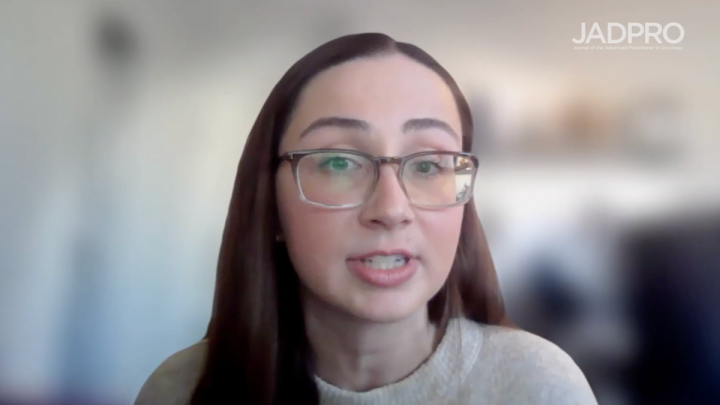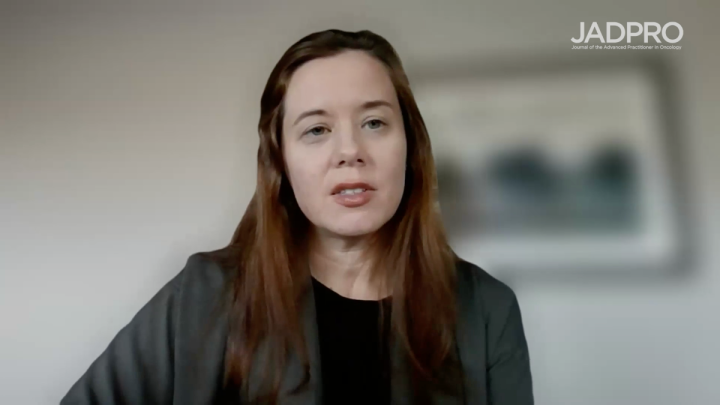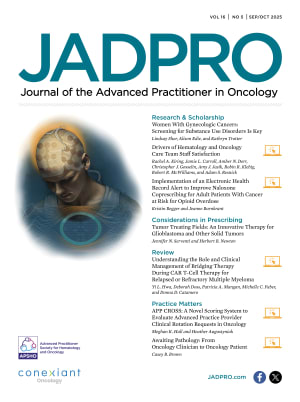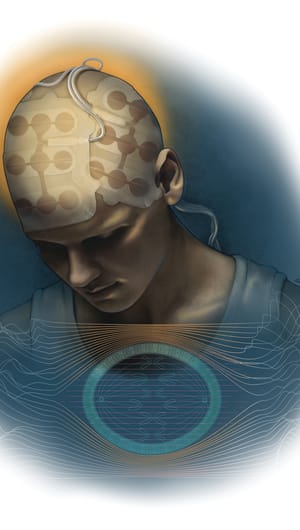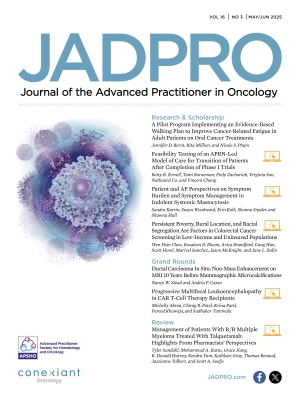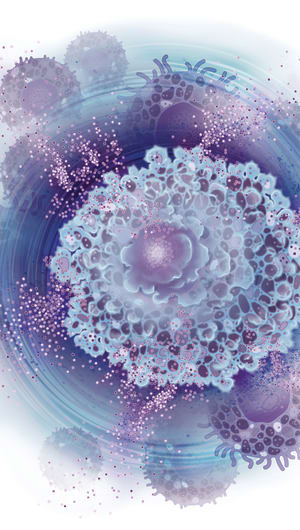Transcript
Today we're talking about the treatment of desmoid tumor. The approach to the treatment of desmoid tumor is a little bit different than what we would do for other types of tumors. We'll be reviewing the beginning of treatment and how we decide to start treatment, what the duration of treatment looks like, and then when we decide to stop treatment.
In terms of initiation of treatment for desmoid, it is a lot different or untraditional from what you would consider treating tumors in general. With desmoid tumor, we really focus on symptoms, and we use symptoms for the patient to guide us as to when it's appropriate to start treatment. The biggest symptom that we rely on with our desmoid tumors is pain. Pain is really a determining factor as to when a desmoid tumor becomes a problem.
So, pain being number one, number two is usually quality of life. That can be a variety of things that can determine different aspects of quality of life, including pain, maybe range of motion, or if the desmoid tumor is in a place on their body that interferes with their daily function. Once a patient tells us that they are having a lot of pain or are having a lot of interference with their daily life, that's when we will initially start treatment.
In terms of duration of treatment, we continue to allow these symptoms to guide us as to when to continue treatment, change dosing, or stop treatment. If someone comes to us with a lot of symptoms related to their treatment, that would be a time when we would stop treatment or look at dosing and adjust that as needed.
Another factor that we use in terms of duration of treatment would be scans. We often go back and look at the size of the tumor, where it is, and what structures that are surrounding the tumor that it is interfering with. If we reach a plateau in tumor shrinkage while a patient is on treatment, that would be a time to have a discussion as to when it's time to stop the treatment or do a holiday. What a holiday means, is that we decide as a team, patient and provider, to take a break from the drug and monitor closely. At that point in time, we're monitoring for pain to return or issues with quality of life again, and that, again, would determine when we would resume treatment. So if a patient, for example, comes in with a certain size tumor and at 9 months of treatment, they come in and they've had three scans, and the last two have been the exact same, then we might have a discussion. "Let's see how you do off of treatment." And then at that point, stop treatment until it's time to resume again.
In terms of duration and how long someone can be on treatment, so far we've not really run into issues, as long as someone is tolerating the medication in terms of side effects that they feel, and in terms of lab monitoring. As long as someone is tolerating the treatment, we can continue that indefinitely if they choose to.
In terms of plateauing of response to treatment, we will always have a discussion with the patient each time we follow up with them, to advocate for taking a break, just to reserve that medication for when we need it, if we were to need it again in the future. And then of course, with an open-ended option, that if they start to have problems again related to the desmoid, that we should be able to resume the medication without any problem or interruption or delay.
In terms of side effects of medication, one interesting side effect that we have encountered in regards to treatment with nirogacestat is testosterone levels. In terms of how that came to be, part of my background as a physician assistant is benign hematology. And we would often check testosterone levels for seemingly mild or subtle symptoms, including moodiness, fatigue, decreased stamina, sometimes anemia, complaints of libido, those kinds of things in our male patients.
In terms of our desmoid patients on nirogacestat, we decided to start checking these testosterone levels in male patients who were reporting these symptoms. And surprisingly, we were finding them to be low. And most of the time they were actually low out of range, not just considered suboptimal. This was actually very surprising, since we were finding this in young males in their 20s and 30s, where their levels typically would be expected to be pretty robust, definitely normal. Since that time, we have been replacing this with exogenous testosterone, with improvement in levels and symptoms.
In terms of checking this level pre-treatment, pre-nirogacestat, this has been pretty difficult to do in this population, because insurance will rarely cover this, because they are considered to be young, healthy males. That is something that we are still trying to figure out on how we can get that testing done prior to treatment to prove that this is something related to treatment or this is something that was pre-existing.
On the opposite side of that spectrum, we also don't yet have data on how this testosterone level will rebound after discontinuing niro. That's still an area of investigation that we need to learn about.
